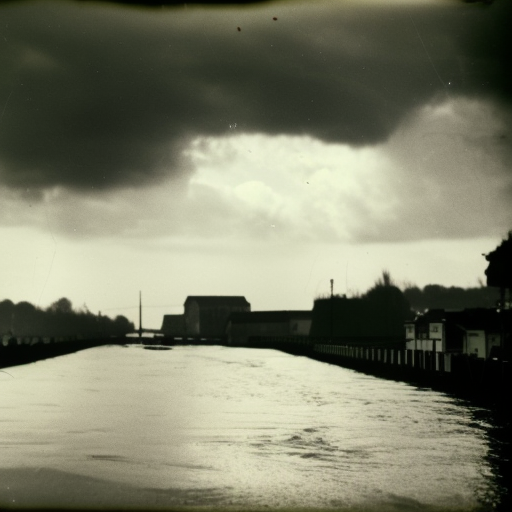Floods of the Po River, November 1951
In November 1951, the Po River in Italy experienced devastating floods that caused widespread destruction and loss of life. The floods were the result of heavy rainfall combined with poor infrastructure and inadequate flood control measures.
Causes of the Floods
The floods of the Po River in November 1951 were caused by a combination of factors. First, a period of heavy rainfall occurred, leading to a significant increase in the water level of the river. The region had already experienced above-average rainfall in the preceding months, saturating the ground and reducing its capacity to absorb additional water. This, combined with the already high water levels in the river, created a perfect storm for flooding.
Impact on the Po River Basin
The floods had a severe impact on the Po River basin, affecting several regions in northern Italy. The water levels rose rapidly, submerging vast areas of farmland, towns, and villages. The floodwaters caused extensive damage to infrastructure, including roads, bridges, and buildings. Many homes were destroyed, leaving thousands of people homeless.
Loss of Life and Displacement
The floods of the Po River in November 1951 resulted in a significant loss of life. The exact number of casualties is difficult to determine, but estimates suggest that hundreds of people died as a direct result of the floods. Additionally, thousands of people were displaced from their homes and had to seek shelter in temporary accommodation or with relatives.
Response and Relief Efforts
The Italian government and local authorities launched a massive relief effort to assist the affected population. Emergency services, including the military, were mobilized to rescue stranded individuals and provide immediate assistance. Temporary shelters were set up to accommodate those who had lost their homes.
International aid also poured in to support the relief efforts. Countries from around the world sent financial aid, food, and medical supplies to help the affected regions. The response from the international community highlighted the severity of the disaster and the need for immediate assistance.
Long-Term Consequences and Lessons Learned
The floods of the Po River in November 1951 had long-term consequences for the affected regions. The destruction of infrastructure and farmland had a significant impact on the local economy. The recovery process was slow and required substantial investment to rebuild and repair damaged areas.
The disaster also served as a wake-up call for the Italian government and prompted a reevaluation of flood control measures. In the aftermath of the floods, the government implemented various measures to improve flood prevention and management. These included the construction of dams, levees, and flood control channels to better regulate the flow of water during periods of heavy rainfall.
Conclusion
The floods of the Po River in November 1951 were a devastating natural disaster that caused significant loss of life and widespread destruction. The combination of heavy rainfall, poor infrastructure, and inadequate flood control measures led to the catastrophic flooding. The response and relief efforts from both the Italian government and the international community were crucial in assisting the affected population. The disaster also served as a catalyst for improved flood prevention and management measures in the region.












